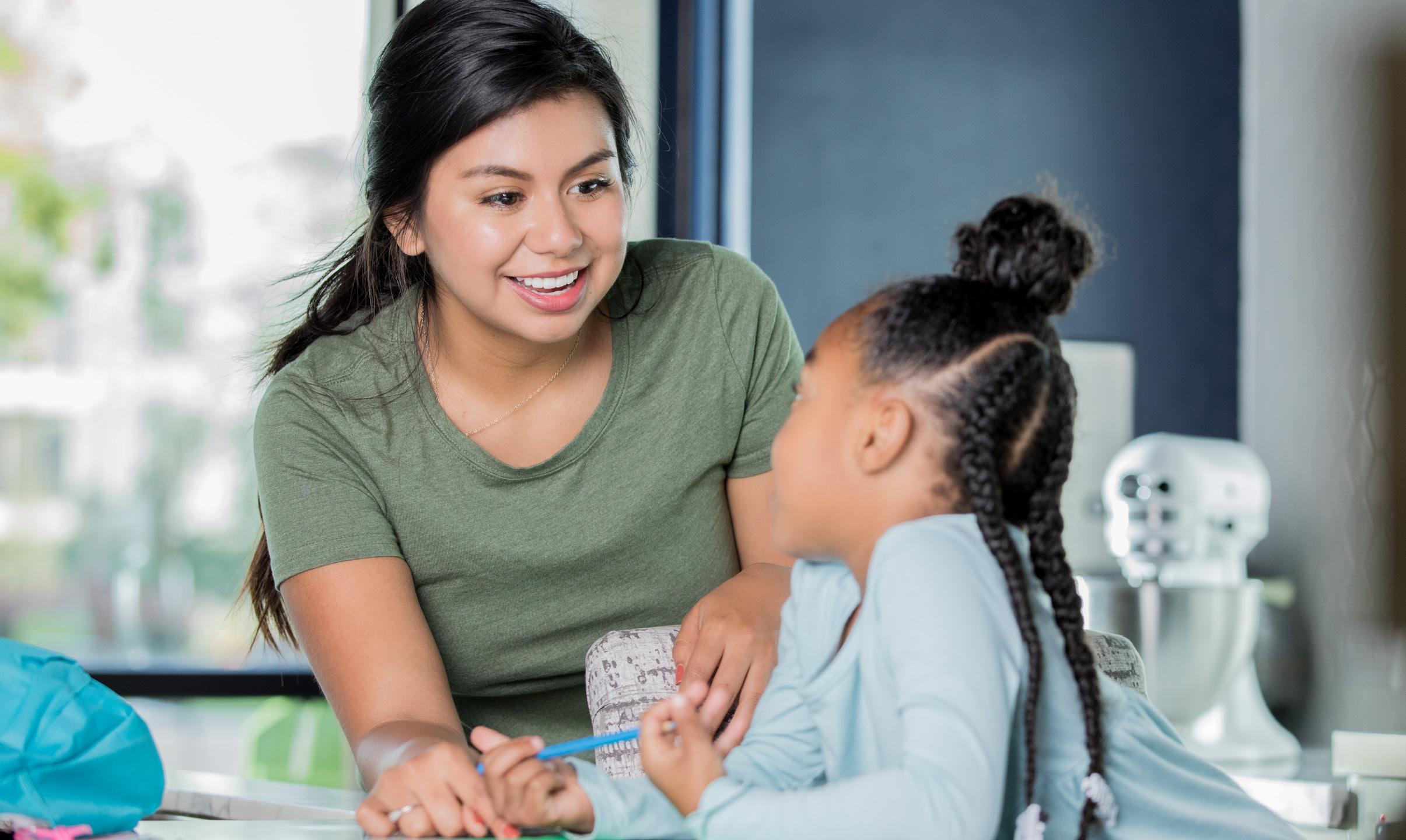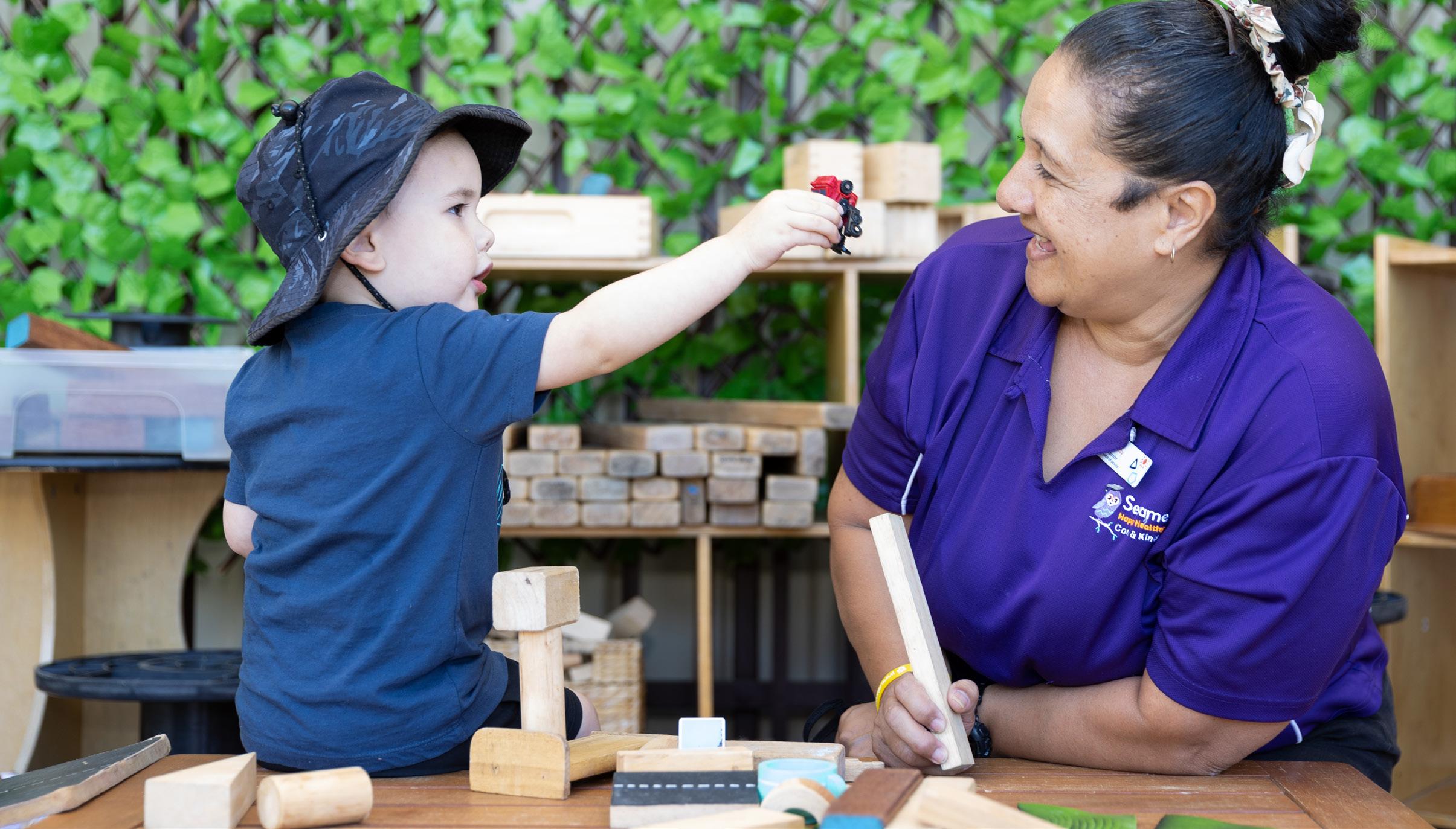
6 minute read
Rewarding and Supporting a Dedicated Team
Updates on Early Childhood Qualifications
Mandy Walker > CAECE Training & Operations Manager
There has been a lot of chatter recently about the new training package but still some confusion and uncertainty about what it means for educators who are currently studying or new educators wanting to start studying.
In July 2021, a new Community Services training package was released. This change was long-awaited and a muchneeded update to align with current research and practice in early childhood. These changes are welcomed, and I believe they will support future educators to have a deep and genuine understanding of theoretical perspectives, holistic approaches, and child development. The most significant change we see in the new package is that there is no longer direct entry into the Diploma. Students must complete either CHC30113 Certificate III in Early Childhood Education and Care or CHC30121 Certificate III in Early Childhood Education and Care as a pre-requisite into the CHC50121 Diploma of Early Childhood Education and Care.
This change may present a barrier to educators with older Certificate III qualifications as they will have to “upgrade” their Certificate III to the new qualification before starting their Diploma. RPL pathways may support these educators to use their previous skills and knowledge to gain the new CHC30121 Certificate III in Early Childhood Education and Care.
The next biggest change is that all the units must be observed by the training organisation in a regulated early learning service in Australia. This means that trainers must observe skills and tasks being completed in service. There is room for training providers to simulate some tasks, but stricter guidelines on what MUST be observed have been implemented. This will ensure that all students are being observed and deemed competent, but the training organisation can not rely on third party reports or workplace supervisor reports as evidence of completing tasks.
The hours required for placement have been increased from 120 to 160 for Certificate III and from 240 to 280 for Diploma. This will only impact students who are not working in the early childhood sector while studying. How you can support your educators during this transition period: • Request a transcript from their training provider to see how far through their studies they are. • Request a transition plan for those who have MORE than 12 units (in either Certificate III or Diploma). • Ask their training provider what steps they are taking to ensure all students complete their studies on time. • Provide trainees and apprentices with non-contact study time. • Provide all educators studying with support and guidance when completing tasks, workplace tasks and when the training provider needs signatures for completing units.
Please note: Any educator with more than 12 units to complete may be at risk of non-completion. Please encourage them to speak with their training provider as soon as possible.
New training package and what you need to know:
Certificate III in Early Childhood Education and Care
Current training package New training package Impacts on current students New students
CHC30113 Certificate III in Early Childhood Education and Care.
Consists of 18 units (15 Core and 3 Electives). 120 hours of placement. CHC30121 Certificate III in Early Childhood Education and Care.
Consists of 17 units (15 Core and 2 Electives). 160 hours of work placement in a regulated children’s education and care service that cares for children aged birth to 6 years.
https://training.gov.au/ Training/Details/CHC30121
Must finish CHC30113 by 14 November 2022.
Only 4 units from CHC30113 are transferable to the new CHC30121 package. We are still taking enrolments in CHC30113 Certificate III in Early Childhood Education and Care.
New students will get started on the units that are in the new CHC30121 Certificate III in Early Childhood Education and Care qualification. And if needed we will transfer students over to the new qualification in the new year.
Diploma of Early Childhood Education and Care
Current training package New training package Impacts on current students New students
CHC50113 Diploma of Early Childhood Education and Care. Consists of 28 units (23 Core and 5 Electives). 240 hours of placement. Educators may enrol directly into this qualification. CHC50121 Diploma of Early Childhood Education and Care.
Consists of 15 units (12 Core and 3 Electives). 280 hours of work placement in a regulated children’s education and care service that cares for children aged birth to 6 years. Entry to this qualification is open to individuals who: hold CHC30113 Certificate III in Early Childhood Education and Care or CHC30121 Certificate III in Early Childhood Education and Care qualification.
https://training.gov.au/ Training/Details/CHC50121
Must finish CHC50113 by 14 November 2022.
If students do not finish by the deadline, their course work is not transferable as the new CHC50121 training package is not equivalent. As of 15 November 2021, we will not be taking any new enrolments into CHC50113 Diploma of Early Childhood Education and Care.
If the student has previous completed CHC30113 Certificate III in Early Childhood Education and Care, we will consider their enrolment on a case-bycase basis.
They must finish their qualification by 14 November 2022. Their course work is not transferable to the new CHC50121 training package as it is not equivalent.
Rewarding and Supporting a Dedicated Team

Sesame Lane Care & Kindergarten
Sesame Lane Care & Kindergarten launches Reward & Recognition Platform, pays university fees for educators, and gifted a new Mazda 2 to an educator.
While recognising hard work, supporting, and rewarding their team is something that Sesame Lane has always done well, they’re stepping it up a notch to make sure their teams are engaged and feel valued and supported both professionally and personally.
Laneways Reward, Recognition & Wellbeing Platform
Kerri Smith, Head of Sesame Lane, believes people ‘make the difference’ at Sesame Lane Care & Kindergarten, and a new program aims to attract, reward, and retain the best in the early years sector. ‘Laneways’ was launched on Early Childhood Educators’ Day on September 1 and has been a complete success. “Investing in our people is a big part of our culture” Ms Smith said.
“We’ve got 400 employees at Sesame Lane, which is a wonderful achievement for a privately owned company. We really want to look after them, we really care. I’ve been researching, surveying, and talking to our employees to find out how we can become the best company for them. Rewards for outstanding work and personal recognition was high on the list of what our employees need to feel valued in their workplace”. The platform enables peer-to-peer recognition in the form of e-cards, which can be used to praise a colleague privately or in a way that is visible to the broader Sesame Lane team. In addition to this, there are monetary incentives for employees celebrating birthdays, years of service and outstanding performance. “Our Managers can send an e-card to an employee and attach a dollar value to it, so if someone’s done a great thing, we can reward them and say, ‘Thank you so much for the amazing work you’ve done, here’s $50’ and the amount goes onto their rewards platform,” Ms Smith explained. The rewards platform has discounts for retailers such as JB Hi-Fi, Woolworths, Coles, Myer, The Good Guys. “When they receive a reward, employees can spend it on the platform with one of the 300 retail partners, and receive a discount so they literally have more money in their pocket, or they can donate it to our current chosen charity, The Pyjama Foundation.”
Another element of the platform is wellbeing, with content to encourage healthy eating, exercise, budgeting and more. Ms Smith said the health and wellbeing of everyone at Sesame Lane is an area of high importance. “Employee wellbeing is a shared responsibility that has a positive impact on employee retention, job satisfaction, productivity and flows to positive outcomes for the children within our care.”











